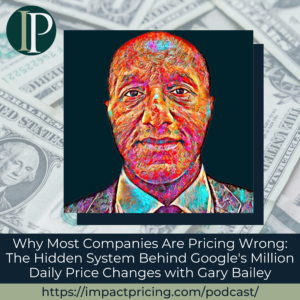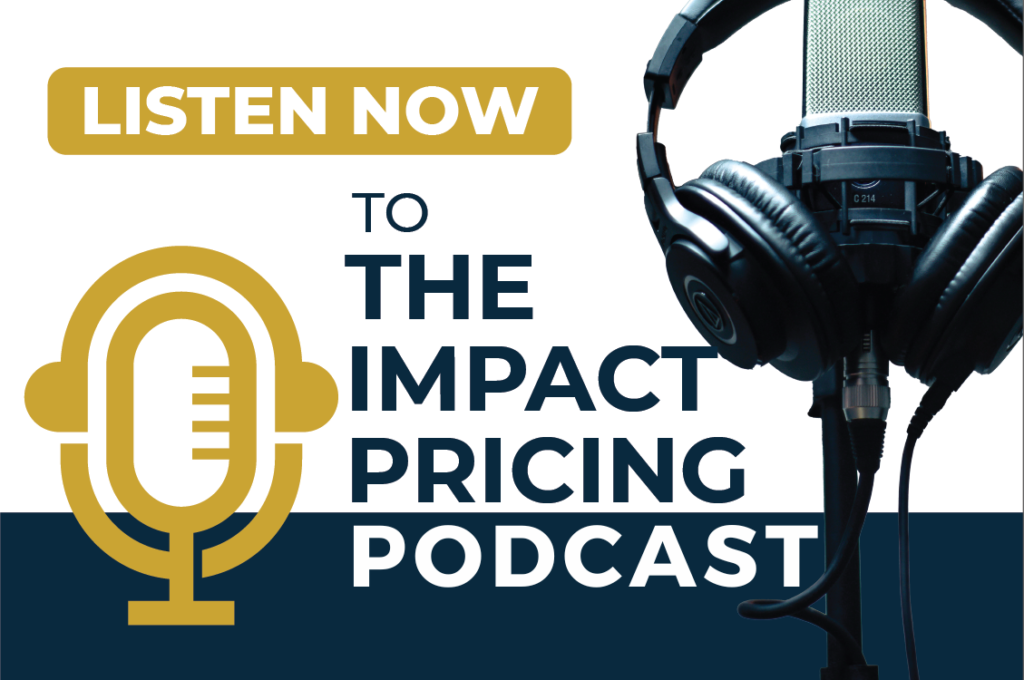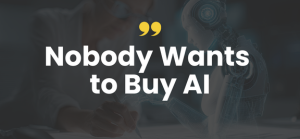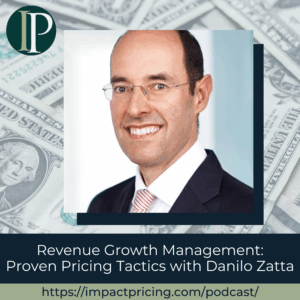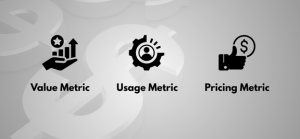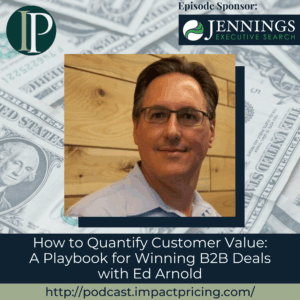Gary Bailey is the founder at The Talent Capitalist, where he teaches monetization as a discipline, and serves as a finance and monetization consultant at FinTech Strategic Advisors.
With a background that spans from banking and derivatives pricing in the 1990s to coaching the rise of AI monetization product managers today, Gary brings a unique perspective to value capture and pricing strategy.
In this episode, Gary shares his insights on the distinction between pricing and monetization, drawing from his experience pricing hundreds of thousands of different financial instruments to help modern AI companies think about value capture. He explores the controversial topic of contextual pricing – why companies like Google and Facebook price millions of micro-transactions differently based on context, time, and user behavior.
Together with Mark, they dive deep into the Jobs-to-be-Done framework, debate whether it’s different from problem-solution thinking, and tackle the thorny issue of when dynamic pricing crosses the line from smart segmentation to sleazy manipulation.
Podcast: Play in new window | Download
Why you have to check out today’s podcast:
- Learn the difference between pricing and monetization, and why value capture is the real game-changer for sustainable business growth.
- Discover how AI companies can price thousands of different use cases without overwhelming customers or appearing manipulative.
- Understand when contextual pricing is smart segmentation versus when it becomes unethically sleazy.
“Hire a pricing person, and that’s it really, because they’re going to throw some things that you hate, throw some things that you like in the same way that you wouldn’t ordinarily try and clear your drain all the time on your own. Why would you not [have] someone clear your pricing issues?”
– Gary Bailey
Topics Covered:
01:32 – From banking derivatives to AI: Gary’s pricing journey through 100,000+ financial instruments
03:28 – Monetization vs. Pricing: Why value capture matters more than price points
06:26 – The Jobs-to-be-Done debate: Are foundational problems the same as jobs?
12:14 – The umbrella test: Distinguishing core jobs from feature-level problems
15:32 – Why SaaS companies struggle: The 10,000 use cases pricing challenge
16:48 – Google and Facebook’s secret: Pricing millions of micro-transactions contextually
18:00 – The factorial complexity problem: When features create exponential pricing opportunities
21:30 – When pricing becomes sleazy: The ethics of contextual price discrimination
23:27 – Airlines and Amazon: When dynamic pricing crosses the line
25:52 – AI for strategic moats: How Gary helps founders identify key monetization metrics
29:09 – Using AI as a pricing sounding board: Context + diagrams = better insights
30:19 – Final advice: Why every company needs a pricing person
Key Takeaways:
“Monetization is really how much of the value that you create are you capturing, and what is the system behind you consistently capturing that value.” – Gary Bailey
“Most of the companies that we know, startups that talk about generating revenue, but very few talk about value capture.” – Gary Bailey
“In reality, the most optimal pricing would be to price every single one of those problems individually.” – Gary Bailey
“When it gets scammy… I think in some of the healthcare stuff, the PBM stuff and some of the other things do I think, well, that’s a little bit risky with healthcare and stuff, but I think people are used to it because they experience it in everyday life.” – Gary Bailey
Resources and People Mentioned:
- The Talent Capitalist: https://www.linkedin.com/company/the-talent-capitalist/
- FinTech Strategic Advisors: https://www.ftadvisory.co.uk/
- Salesforce: https://www.salesforce.com/
- HubSpot: https://www.hubspot.com/
- Google/Facebook/Meta: Examples of companies with sophisticated contextual pricing
- Amazon: https://www.amazon.com/
- OpenAI/ChatGPT: https://openai.com/
Connect with Gary Bailey:
Connect with Mark Stiving:
- LinkedIn: https://www.linkedin.com/in/stiving/
- Email: [email protected]
Full Interview Transcript
(Note: This transcript was created with an AI transcription service. Please forgive any transcription or grammatical errors. We probably sounded better in real life.)
Gary Bailey
Hire a pricing person, and that’s it really, because they’re going to throw some things that you hate, throw some things that you like in the same way that you wouldn’t ordinarily try and clear your drain all the time on your own. Why would you not have someone clear your pricing issues?
[Intro / Ad]
Mark Stiving
Welcome to Impact Pricing, the podcast where we discuss pricing value and the contextual relationship between them. I’m Mark Stiving and I run boot camps to help companies get paid more. Our guest today is Gary Bailey. Here are three things you want to know about Gary before we start.
He is the founder at The Talent Capitalist, where he teaches monetization as a discipline. He’s a finance and monetization consultant at FinTech Strategic Advisors. And as you go through LinkedIn, you have to go all the way back to 2017 to find a title that doesn’t include the word monetization. So, welcome, Gary.
Gary Bailey
Hey Mark. How are you doing?
Mark Stiving
I am fabulous today. Thank you. Well, let’s start with the easy, well first before I even ask the easy question, I just want to point out I’m working on another book and my next book is called Context Driven Pricing. So, I love the fact that you chose the word contextual relationship. I just think that’s really good. Nice. So let’s ask, how did you get into pricing?
Gary Bailey
Funny enough, I fell into it. I started in banking, an audit background. We called it CPA, and we call it a CA, but it’s the same, Chart Accountancy. And then this was at the dawn of kind of, you called it glass steagall, I think, in the states. And we had the big bang where banks started to expand and take over the world.
And at that time, banks started to expand into different products. And versus where they were in terms of traditional loan and lending, they moved into derivatives and derivatives needed a different type of pricing person.
And so, whereas before they could just be happy with simple maths, they needed someone who was interested in more derivative into core calculus and stuff. So my first kind of pricing was back in the 90s when basic derivatives were starting out and we kind of bootstrap the way we valued and price certain derivatives.
And that kept me going for 20 years, basically I was the person in finance arguing with the [inaudible] want to make more money by miss marking his or her book. And so, that got me really excited about pricing and breaking down pricing and that the beauty of banking is that every single instrument was priced differently. And this is where we come to later when we discuss it, every single instrument.
So you might have 50,000, we had a hundred thousand different instruments all priced differently in a certain way, and you had to be able to run an algo to price every single instrument like a product differently.
Mark Stiving
Nice. Well, I tell you what, what I love about pricing financial instruments is that you. You’ve taken essentially all the emotion out of it, and it’s really about what’s an expected return, right? What do we think is going to happen? So you are truly on the value side of value-based pricing.
Gary Bailey
I see.
Mark Stiving
Yeah. Okay, so I want to start out with the question. Everything that you do is monetization. I think one of the fascinating things is you’re coaching the rise of AI monetization product managers. I just want to ask, what the heck do you mean when you say the word monetization?
Gary Bailey
I think monetization slightly separate from pricing, which tends to be a price point, is the system where you make money, but more particularly the system where you capture that. And so, most of the companies that we know, startups that talk about generating revenue, but very few talk about value capture. It’s only maybe later on when they get more mature they say, how much of this value that we create are we capturing.
And if you look at the market you say, what could be called Monopoly? The least say, Google, Facebook, capture circa 40% of the value they create by the 2.5 X ROAS. And then you go down to Amazon capturing sometimes 20% of the FBA, sometimes a bit more, 30% on some parts of the order book, et cetera. And so, it’s very easy to see in certain firms what their value captures.
Marks on the book at $10 and we give him seven. So it’s very simple. And as you roll down, you might get a Salesforce at about two to three, in Adobe at about five. So monetization is really, how much of the value that you create are you capturing, and what is the system behind you consistently capturing that value.
Mark Stiving
So I certainly agree or imagine that it’s that system. But here’s what’s funny, and we’re going to talk about another place where we might disagree on terminology, but here’s what’s funny, is I think everything you said I think of when I think of pricing, right? So I still think of pricing metrics. What is it that you’re going to charge for? And that’s really monetization. And I still think of how I am going to package my product portfolio and that’s really monetization, right? So to me they’re almost the same thing.
Gary Bailey
Yeah, agree. Agree. Basically you could do them interchangeably, I suppose. But I suppose by saying, people rarely talk about price points for Google or Facebook or Meta, even though they must have millions of price points.
But people rarely use that terminology. But you’re right, they’re issuing price points on their CCPC, et cetera, every single second. But people rarely say, how are Google or Facebook or Meta priced? They normally say how they are monetized. But, yeah, you’re right, Mark, their [inaudible]
Mark Stiving
Okay, so we’re going to come back to the AI part of that coaching the rise of AI monetization product managers in a bit. But here’s the reason I invited you on the podcast. I have talked to Steven Forth many, many, many times, as you know. And he and I discussed Jobs-to-be-Done and he says, oh, everybody’s using Jobs-to-be-Done and he’s using Jobs-to-be-Done, and I just don’t get it, right?
I mean, I’ve read the books. I read articles. I think about it a lot, but I have a very different way to think about it. And maybe it’s exactly the same thing as Jobs-to-be-Done, and maybe it’s not. So first tell me what is Jobs-to-be-Done, and then I’ll tell you how I think and let’s try to figure out if they’re the same or different.
Gary Bailey
It’s a good question actually, ’cause I’m not coming from a product management background. So my view is probably not dissimilar to yours, which is, how do I express what I want this product to do for me? When I use this product, what result do I want to get out of it?
And so, if we take Salesforce as a real example, they’re moving towards this AI agentic world, as it were. You could argue anybody using a Salesforce platform is, I dunno, millions of people I assume now, they each have different jobs that they use as features to achieve.
And they rearrange those features in a certain way that makes it perfect for them to achieve what they want to do, whether it be an update or projection based on sales pipeline, et cetera. So within that framework of Salesforce, everybody has basically said, you know what? I use it for X, Y, Z, A, B, C, and those X, Y, Z, A, B, C, essentially jobs.
So it is probably not far away from what you are thinking. But because we’re kind of presented by a blob of a product, which I dunno, it could be basic pro, enterprise, essential with features coming down, it’s very hard to conceptualize that people pick feature two, feature eight, feature nine, and create something of value for themselves.
They’re essentially creating a job. And because it’s not labeled the job, people do actually get a bit excited when you say a job to be done. But any product with more than 10 features has 10 permutations, 10 factorial of ways, which is hundreds of thousands of ways it can be put together.
And HubSpot is another example, I’ve seen people use it in wildly different ways, sometimes scarily different ways. And with all of that, they basically tailored the jobs out of all the things that HubSpot allowed them to do. So they don’t call it jobs, they call them tasks or SOPs or whatever they want to call it. But essentially, they are jobs that achieve something when they press this button and win that macro.
Mark Stiving
Okay. So let me tell you what I do, and then let’s try to figure out if it’s the same or different.
Gary Bailey
Yeah. That’s alright.
Mark Stiving
So, I think constantly in terms of problems and results. So what’s the problem we’re going to solve? What’s the result that we should achieve? Here’s why I think that’s different than jobs to be done, but I’m totally okay hearing otherwise, right?
I think that if you were to look at the large problem, and I call that a foundational problem. If you look at the reason why I buy a product, I think that’s the job to be done. I call that a foundational problem, and if I solve that problem, then I get some result.
But along the way, you talked about all these other features that I might get or I might want, and so, you know, maybe I need to have fast texting with the person across the country, right? And so, that’s a feature. Is that a job to be done? Well, I could tell you there’s a problem there. The problem is I can’t communicate with the person on the other side of the country fast enough to get my job done.
And so, what’s the result? The result is we’re able to make that communication, which means we can make transactions faster, whatever it is that we’re trying to get accomplished. So I could take almost any feature and say, you built it ’cause it solved a problem. And if you solve that problem, it achieves a result for a client, for a customer.
Gary Bailey
Yes. So let’s take your example of let’s say just Salesforce and how people use Salesforce. So I worked in finance. My only real interest was, can you give me a decent projection at some point? And however you want to do that [inaudible], can you give me a decent projection? So someone in my world of finance…
Mark Stiving
By the way, can you pause for just a second, Gary? Can I just say, give me a decent projection, I think is a great job to be done.
Gary Bailey
Okay, cool. Yeah, okay. So, in that sense you say, okay, I might need five or six features that enabled me to do that. It might be one feature if I’m really lucky or they’ve separated the product out, but generally it’s going to be four, five to six. And so, those 4, 5, 6 features bundle into a bunch of tasks that basically bundle into, you can say a result, which is Gary or CFO gets the projection.
And so, the problem is we need a system that basically can house like a myriad of random traders projections. And then with percentage likelihood, some forecasts, etcetera. And then assemble that into the result that the CFO can issue some guidance to Wall Street, or it would’ve been, say, London.
And so, the problem, I think it’s exactly the same. The problem is literally we’ve got spreadsheets running all over the place, before we had Salesforce. With traders guesstimating stuff is going wrong. And we solved it with Salesforce and now the result is that the CFO has got like 99% confidence in the fact that we can deliver a projection. I think it’s the same with your problem-result, really.
Mark Stiving
Yeah. So, I want to push back ’cause I don’t, I’m not bought in yet.
Gary Bailey
Okay. That’s all right.
Mark Stiving
Let’s step into something much more physical for a second. Let’s talk about an umbrella, right? Okay. So, what’s the job to be done for an umbrella? There’s probably a few of them, but we know we use an umbrella to keep the rain off our heads, right?
We use an umbrella to give shade too, but we’ll just use the rain one, right? So there’s the job to be done. Now it turns out that there are some umbrellas that have features that make it so that it’s really hard to turn inside out if a wind blows really hard.
Gary Bailey
Yeah, I agree. Yeah.
Mark Stiving
Okay, so what’s the job to be done? Is it to keep the umbrella from flipping upside down, or is it to keep the rain off my head?
Gary Bailey
Initially the job is to keep the rain off of your head. And then, you can argue, a benefit or a separate part of the job is okay, make sure it’s sturdy enough to not blow away in the wind. But the main job, the core job that people would really buy it for is to keep the rain off of your head.
People could use it for different jobs. People use it for decorations, people use it for shade, but that would be the main seller. Agree. So, but I think your, because I’ve listened to your problem-result, and I think it’s actually the same with the job, but breaking it down into the microcosm of, people use Facebook or Meta or Google to get a sale, assuming, let’s just take that one example.
But underneath that, there’s like hundreds and hundreds of different events of each job that can lead to basically the bigger job of the sale. And so, my position is I’m trying to see what’s happening to the market and say, why are they so successful? Why are these companies, they didn’t start off with monopolies, no one starts off as a monopoly, unless it’s a utility.
And so, they did something with their pricing and monetization that allowed them to have escape velocity to say, well, actually we just have a better monetization model or pricing model than anybody else. Hence, we’re going to win even if it’s only 1%, we’re going to compound that 1%. And I believe those were successful because they individualized pricing.
And if we throw in your contextual, there may be the same event with different contexts that they will price differently. So I think it really does hold into what you say, because the same outcome over four different hours can be priced differently by, and is priced differently by Google and Facebook because they say the context is different for each one.
Mark Stiving
Spot on. Okay. So I think we’re in agreement, but I just want to make positively sure. I’m going to say what Jobs-to-be-Done. I’m going to define Jobs-to-be-Done my way. And then you could say, Mark, that was totally wrong, or that was okay, right? So I’m going to go back to my umbrella example. And in my umbrella example, what I said is, the foundational problem we have to solve is keep the rain off our heads.
And then there’s other problems that we solve as well along the way, and one of which is, when the wind blows too hard my umbrella flips upside down and becomes useless. Okay. And so, your thought is the job to be done, the big job to be done is keep the rain off our head. But there are other jobs to be done and one of those jobs is to not flip upside down when the wind blows too hard.
Gary Bailey
Yes. But I would say the only reason it’s really sold is for the first job or to keep shade. There’s only two reasons why I would buy. Like I would only buy Salesforce because I really do want to manage my Salesforce, the actual team, boys and girls, in a really controlled mass military sort of way. And then obviously the benefits of that thereafter are all little peccadillos. But really it’s, I really want to have the result of managing this army of salespeople in a very, very constructive way.
Mark Stiving
Yeah. So I tend to call those foundational problems, but I could switch my terminology and call those jobs to be done ’cause I think it serves the same purpose, right? The point of it is to say, why does somebody buy your product?
Gary Bailey
Yes. So now we get into the meat of it by saying, okay, so, SaaS has been very successful-ish, in my English term, which means, yeah, it’s kind of successful. But there’s very few SaaS IPO, that means they’re not that successful. And so, other than the one that started the first, second, and third, always, they won each market, whether it be in the marketing or sales, whatever.
So you say, okay, so why then the tenth also land, able to win? What are they doing wrong? If you think about any product, I can pick HubSpot for example, which is doing okay but doesn’t return huge amounts of net income. It returns great valuation, but net income is never brilliant, but it’s a brilliant system.
Within the system of HubSpot, as I say, I’ve seen, I’m not in marketing. I’ve seen marketers use it in probably a hundred different ways, and that’s just my limited sample size. So I can imagine it’s probably got 10,000 different used cases. So, those are a mixture of features. Those 10,000 use cases are 10,000 jobs, essentially, or 10,000, you could say, different results that people want.
The way they configured it, the way they import stuff, the way they use APIs, they’re 10,000 jobs and 10,000 results that they expect from those jobs. Now, in reality, the most optimal pricing would be to price every single one of those problems and results individually as do the big companies like Google and Meta.
Now, I’m obsessed with these because they don’t talk about pricing, they don’t talk about monetization. No one who leaves those two companies ever gets on a podcast and talks to you for an hour or two, Mark, that they could do, because they’re the world of knowledge that they have. So, I’ve been down the rabbit hole and working out how many engineers they have and how much dedication and what name they use, rather than calling pricing specialists and monetization, would it be analyst and this, and would it be that.
But essentially, those 10,000 scenarios at Hubspot, they are pricing. Every single one of those 10,000 scenarios in a contextual basis based on time of day, mood, where you are, what kind of system you are using, Android versus iOS, et cetera. So they’re doing exactly what you propose, but at scale, almost like nuclear scale, you might say.
Mark Stiving
And they’re probably using AI and algorithms to go figure it out. And they’re not methodically thinking, when is someone willing to pay me more?
Gary Bailey
Yeah, agree. And then the auction on top adds to that, obviously, that you get to play Harry against Valley, et cetera. So all the mechanisms are really saying, I want to price 10,000 different units, using a Hubspot example, in a kind of competitive race that makes it slightly sexier. But they could do without a competitive race, it wouldn’t be optimal.
And so, if you take that scenario and you say to any AI company, have you got more than another 10 features? If so, then you have 20 factorial or 10 factorial, 20 factorial worth for permutation that someone may have a problem who looks for a result, and that’s 10 factorial or 20 factorial with a big number.
Mark Stiving
Yeah, but I want to push back on that just a little bit. By the way, I don’t disagree with anything you said other than saying it’s 10,000 different problems. I mean, in a way it is. But in another way it might be one problem, right? So, let’s talk about Google Ads for a second, right?
Here’s the one problem. I want more people to buy my product and I want to advertise on Google to do it, right? I call that a foundational problem. You could call that a job to be done. Totally fine. And then once you get into the minutia, everybody has a different amount of rain falling on their head, right?
Gary Bailey
Yes. Yeah, I agree. Agree. But I suppose if you are trying to price units, you would basically say, well, can I sell that same umbrella? Already contextual. I can sell it probably outside of the station for more money. For whatever reason. Yeah. Because people come out and say, okay, let me get it. That’s one context. Two, the timing, the amount of precipitation at that time, is it raining heavily or not?
So, there’s just in your scenario of an umbrella, if they had an algorithmic price rather than just the sign written up, they would price it differently every minute. So all we are saying is with AI companies or any companies offering, are there many different contexts that you are able to offer that one same problem for the same problem that you’re going to solve? But some of its precursor, some of it’s after, some of it’s during, and the whole thing based on what you are willing to pay.
You look like you have more money than the person who’s basically just walked out, who’s just going to university. So you would do that to the same thing with the same set umbrella. And all he’s saying is, can we move closer to that without being scammy to the form to reach the context of someone who will pay a different price and different context.
Mark Stiving
Fascinating. There’s so many places I want to take this conversation with you, Gary. Given what you just said, I posted a blog last week that had to do with how to keep pricing from being sleazy.
Gary Bailey
Yeah. Okay. That’s a hard one.
Mark Stiving
It is. It’s really hard actually, because I am a huge believer in price segmentation, right? You give me two different buyers willing to pay two different amounts. I want to figure out how to get more from the buyer willing to pay us more, right? And then there was this video that came out from the US government, and it was all about sleazy pricing.
And what they were really talking about was how companies are using data they’ve gathered about us on the internet that we didn’t willingly give them, right? And they’re using that to influence what prices we get. And I got to say, I’m torn whether I like that or don’t like that. But I can tell you that there’s a lot of people who hate that.
Gary Bailey
Yeah, I agree to a certain degree, but everybody agrees segmentation is the right way to go. And some segmentation you get upset about, but others we don’t.
So, I go to the cinema every couple of weeks to the picture house. I don’t get upset that old people get a different price, older people, pension as we call them in the UK. I don’t get upset that the pensioners pay less than I do. It’s just the way it is. I also don’t get upset that they basically charge a different price for the matinee on Saturday than they do in the evening show.
And so, we all experience price and segmentation and discrimination in different ways in the sense that we just, oh yeah, of course that old person should get a different discount. And of course it’s off less on a Saturday afternoon, but it’s everywhere.
And so, the point we’re saying is, I think, yeah, as long as basically people are willing to have the agreement that they’re getting different values. I’m getting a different value from the cinema at eight o’clock than I would at two o’clock because my kids still are available to play sports at two o’clock and they’re not available at eight o’clock.
So, I can experience it on both sides. So, I think, when it gets scammy of this, I think in some of the healthcare stuff, the PBM stuff and some of the other things do I think, well, that’s a little bit risky with healthcare and stuff, but I think people are used to it because they experience it in everyday life.
Mark Stiving
So, I certainly agree with healthcare. I try to avoid pricing medical stuff for that exact reason, right? I don’t want to be the one who charges someone more for their health. But let me give you an example. Let’s say that you want to take a flight. And you go to look at United Airlines or whatever airline you’re using over there in London. British Airways, probably.
So you got to look at British Airways and you see that the flight is 200 pounds. And then you think about it, you’re like, no, not yet. Then you look at it again and you’re like, hey, it’s 200 pounds. And then you’re thinking about it. It’s like, nah, not yet. Then you look at it again and it’s 240 pounds.
Gary Bailey
That happened the whole time. Yeah, I agree on that. Wait, I think that’s a good example because it happened to me last week basically. But, you’re right, I think that would’ve taken it to the nth level. I think airlines, UK, Irish Airlines, and Merck, could have taken it to the nth degree of like, wow, that you’ve gone crazy.
So, no, I agree. Whether their pricing for the toilet, pricing for this, the bags getting smaller. So, I think airlines really do, they give healthcare a good name sometimes. Yeah.
Mark Stiving
Yeah. But I think the point is they’re using information that you didn’t really want them to use to set prices, right? And it’s the fact that you keep going back and going back.
Gary Bailey
Yes. But I see that more of a, I say probably because we’re in the game that we see that as part of that is a game. It’s a game with the airline. It’s a one touch deal. Make sure you book a bit away. So, we know the game they’re playing and obviously we have to play a similar game. But yeah, I agree, that’s scammy. There’s no way. Yeah, airlines are scammy. There’s no way around it.
But I don’t know whether Amazon is probably also a decent example when you see some of the stuff they do online and we know they’re doing it, but it’s always back to your point, Mark, in this case of, do I want that cuddly toy at this price? Yes or no. Even if [inaudible], do I want that cuddly toy or that plastic, whatever, at that price?
Mark Stiving
Yeah. So, Amazon probably has a profile on me that says I’m not a price sensitive consumer just because of the type of things I buy or whatever. And so, whenever it gives me a quote, it probably quotes me higher. I should start using a VPN.
Gary Bailey
Yeah. Another, I mean, I definitely think they, well, we know pricing. But it’s a really tough one because I’m on one hand saying that actually AI companies or any new startups need to think about more than three different segments of pricing, or three different plans.
They need to be taking their whole business and inverting it 90 degrees. But I wouldn’t expect them to go as far as the airline, literally pricing it per minute based on changes or what kind of system or platform or protocol they are using. No, no way.
Mark Stiving
Okay. We’ve got a few minutes left. I want to jump into the last topic that I’m always curious about. So you’re obviously helping AI companies with their pricing. How are you using AI in your world today? How is it helping you with what you do?
Gary Bailey
Probably less so in terms of the actual pricing per se, but more trying to get to the knob of what is their main strategic goal? And so, an article I listened to recently, I think it’s Brian Balfour. He’s talking about how platforms open up and let you in and then encourage you to API and stuff and build them, then they close the shop.
Meta, obviously throughout Facebook, Google’s done it and obviously recently LinkedIn’s doing more of it. And so, right at the end of it, he used an OpenAI example and said, okay, their real kind of moat is going to be memory. The more they remember about what Mark’s been doing on OpenAI, on ChatGPT, the more they’re able to service Mark better. And so, you think, oh, interesting.
So, that then says, okay, all the way across growth or sales or marketing, and particularly monetization, we should be thinking about what is the monetization metric that corresponds with memory. Is it a monetization unit per memory used? Is it memory locking? Is it memory conversion? I don’t know what the actual metric is, but that would be the first point.
So, the AI that I would use, what the founder would be, let’s get to the knob of where you believe you’re going to have a strategic moat. What are you trying to achieve? Because everybody wants growth and increase in revenue and stuff, but what type of revenue do you want to increase and how do you want to, obviously, retain it?
And so, in OpenAI, the example used by Brian Balfour, it’s memory. So, they obviously want us to hit memory limits, to upgrade to pro, et cetera, et cetera. And so, I think that’s a good metric. How much revenue are you getting per memory? And obviously how are the upgrades going after you hit full memories? But I found that could be another factor.
And so, getting to the core of their strategic moat, AI is fantastic. Because you’ll run through and you’ll put some stats in that they have. Anonymize them a little bit. Put some stats in. And then you’ll basically say, okay, what are some of the feedback, well, some of the feedback you’ve had from clients and that can analyze that semantically. And then you’d feed in obviously the data from where they’re actually selling and what type of client they are selling to.
And that then gives an indication of which is the key metric that actually you should be offsetting or trying to compare your monetization for because that metric is going to enable you to get to Salesforce, or HubSpot, or whatever you want to be. And that normally takes a few hours of basically questioning ChatGPT particularly, also, I’ve used DeepSeek which I think is very good, to work out what could be the three, or four, strategic moats that this founder is going to basically agree to or believe in.
And then he or she will basically pick and say, actually, yeah, I was thinking that one, but I didn’t probably think deep enough. And I wasn’t thinking about the other two. And so, then you set your monetization down. That’s what we need to basically focus on when we’re building this kind of dashboard and kind of hub.
Mark Stiving
That was a fabulous answer. I love that. Thank you. I just want to tell you, I use AI a lot, like a sounding board. A conversationalist. But I never ever take what it tells me as truth. It’s just like it’s wrong so often. Even when I know, I know the answer and it gives me a wrong answer.
Gary Bailey
Yes. A bit of imagination and basically if you phone a lot of information, so my context tends to be, it can be as much as a few hundred words. And I tend to also put in a diagram. So, the context is words and then some sort of diagram. It could be a framework that I’ve made up or a framework that the market knows or whatever. It could be two by two. And it will have either one or two diagrams to focus on. And then it will have a lot of context and words.
And I think the diagram particularly really adds value because it looks at a diagram. It looks almost like a prism of, I know you [inaudible] in your system, but please look through the prism of this plus the context I’ve given you in words. And I think it achieves a pretty good result, especially in terms of its imagination. If you top off the top one, which is rubbish, then in the bottom one, in the middle you’ll find two or three gems that you’ve never seen before.
Mark Stiving
Nice. Nice. Gary, we are out time, but I do want to ask you the final question. What is one piece of pricing advice you’d give our listeners that you think could have a big impact on their business?
Gary Bailey
I would say, hire a pricing person, fractionally full time anytime, nighttime, daytime, bedtime, whatever. And that’s it really, because they’re going to throw some things that you hate, throw some things that you like. In the same way that you wouldn’t ordinarily try and clear your drain all the time on your own. Why would you not have someone clear your pricing issues?
Mark Stiving
Yep. I think that’s a great piece of advice. Gary, thank you so much for your time today. If anybody wants to contact you, how can they do that?
Gary Bailey
On LinkedIn, I’m Gary Bailey on LinkedIn. And, yeah, I post probably every couple of days there at least. And, yeah, I’m there so connect with me, DM me, do whatever you want.
Mark Stiving
Excellent. Thank you. And to our listeners, thank you for listening. If you enjoyed this, would you please leave us a rating and a review, and if you have any questions or comments about the podcast or if your company wants to get paid more for the value you deliver, email me, [email protected]. Now go make an impact.
[Ad / Outro]


